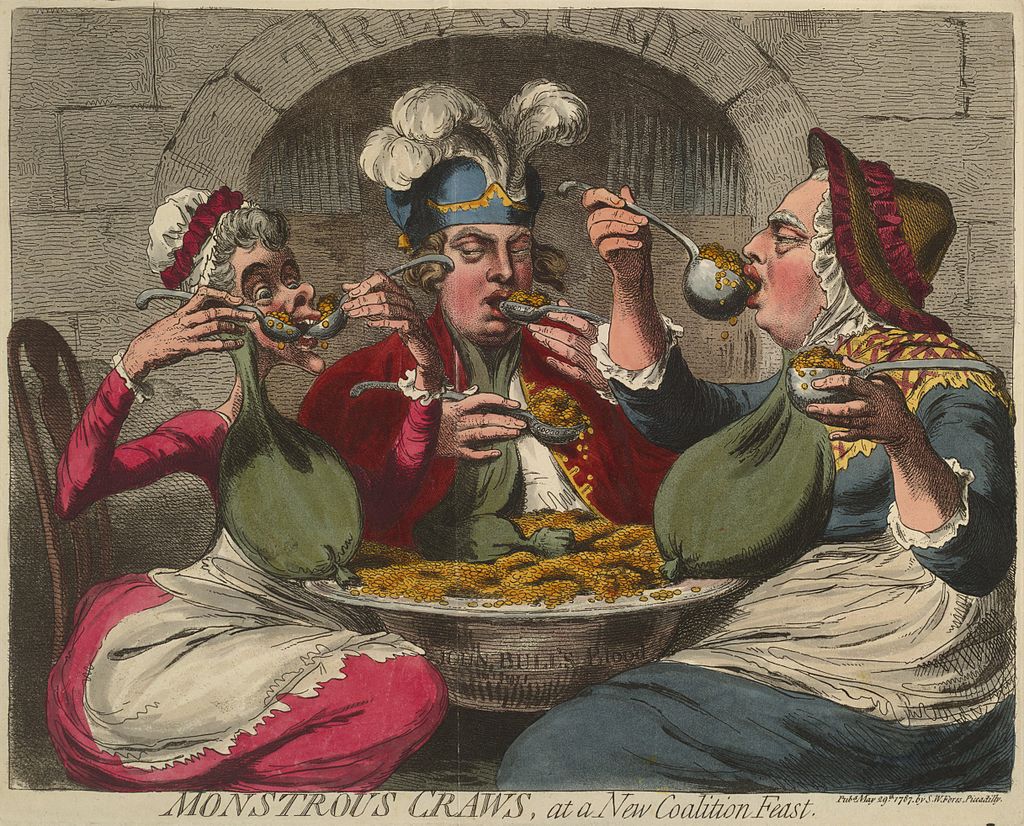Soups, Stews and Coddles

“Who passed away. Who departed this life. […] More interesting if they told you what they were. So and So, wheelwright. I travelled for cork lino. I paid five shillings in the pound. Or a woman’s with her saucepan. I cooked good Irish stew.”
– James Joyce, Ulysses
Orientations for Arcadia students spending the term or the full academic year in Ireland included a visit to a cookery school – either at Howth Castle Cookery School or at Catherine Fulvio’s Ballyknocken House Cookery School in County Wicklow. In both venues, the menu consisted of soup and bread. In Howth, everyone learned to make a delicious spiced Moroccan roast vegetable soup, flavoured with cumin, coriander and ginger; while in Ballyknocken Catherine demonstrated the process involved in making a more traditional Irish type of vegetable soup.
In both cases, the choice of menu was apt for this cold season. (And I write this during the coldest January we have seen in a few years here in Ireland.) There is nothing quite like coming home at the end of a long day from the cold to be greeted by the smell of something that promises to warm the body and feed the imagination.
And feed the imagination it certainly does. The great Irish novelist James Joyce knew this. It was surely no accident that Leopold Bloom, the main character in Joyce’s Ulysses, concludes his elegiac list of characters buried in Dublin’s Glasnevin cemetery not with one of the male middle-class professionals interred there, but rather with the humble woman with her saucepan who proclaims “I cooked good Irish stew.” (This was not the only occasion in Joyce’s masterpiece where a working-class or peasant woman had come bearing good food to restore mental and physical health. In the opening episode Stephen Dedalus and his friends entertain the milkwoman who is the bringer of good food and fresh air to the urban world of rotten guts and rotten teeth.) A couple of chapters later, in the Lestrygonians chapter, Joyce explicitly addresses the connection between diet and imagination, as Bloom considers how poets and artists – “Dreamy, cloudy, symbolistic […] esthetes,” as he calls them – are likely to eat differently from those engaged in physical pursuits. “I wouldn’t be surprised,” he muses as he considers the effects of vegetarianism on the body, “if it was that kind of food you see produces the like waves of the brain the poetical. For example one of those policemen sweating Irish stew into their shirts you couldn’t squeeze a line of poetry out of him. Don’t know what poetry even is. Must be in a certain mood.”
No less than Joyce’s, it appears that the smell of a hearty meal slowly simmering away in the kitchen also excites the imaginations among the staff of Arcadia Ireland. During some of the other student orientation activities, not all of them conducted in the warm indoor setting of a country house kitchen, staff talk turned on several occasions to the warming winter dishes that had given us joy over the years. Specifically, we talked of soups, stews and coddles, waxing dreamy and lyrical like one of Leopold Bloom’s aesthetes at the memory of meat and vegetables stewed for hours in stock. The first two of these dishes – soup and stew – will be more familiar to the non-Irish (or even the non-Dublin) reader than the third. So perhaps this is the time for a brief guide to these three liquid-based culinary favourites: soup, stew and coddle.
Irish stew is probably the closest thing the Irish have to a national dish – although of course the idea of not exclusive to these shores. Stews are a favourite of vernacular cooking the world over. They go back as far as the introduction of the cauldron, or cooking pot; and that is a very long time indeed, given that the oldest archaeological examples of such large cooking vessels in Ireland date back to the bronze age. (The National Museum of Ireland has several examples of bronze-age vessels in its collection, such as the Castlederg Bronze Cauldron dated between 700-600 BC.)
Rather than following a precise recipe to the letter, the precise composition of each iteration of this type of folk dish depended on the availability of ingredients – sometimes in the form of leftovers – that could be merged together in a large cooking vessel. In peasant culture, nothing would go to waste, and the familiar recipes of the stews so beloved by modern home cooks and gastro-pub chefs alike – not to mention by tourists visiting Ireland – were born from improvisation.
The soups our Arcadia students made at the cookery schools during orientation were both vegetarian options, but a traditional Irish stew is usually made using lamb or mutton, or even sometimes beef. Today we are more familiar with lamb (a perennial favourite on gastro-pub menus) than with mutton. Traditionally, though, it was more common to use mutton – often, especially among the poorest population groups eking out a meagre existence in remote areas, the mutton of the oldest sheep who had outlived their usefulness as producers of milk and wool. And because the meat from older sheep is less tender than that of its younger relatives, it needed to be stewed for hours in a cauldron over an open fire. (It was this same necessity for making the less-than-tender flesh of animals who had outlived their usefulness around the farmyard palatable that saw the invention of other classic folk dishes in world cuisine, such as the French coq au vin.) Added to this were root vegetables – initially onions (one of the oldest known cultivated root vegetables), leeks, parsnips, turnips, carrots. The potato only came later, after it was introduced to Ireland by Sir Walter Raleigh after one of his South American expeditions in the Elizabethan era. Some cooks add further ingredients like pearl barley for additional texture (while others consider this a mortal sin!). Parsley is generally used for additional flavouring.

There were no written recipes for this kind of folk dish; the methods and ingredients used (which could vary by region and by season) would be handed down orally through the generations. As happens for many aspects of traditional culture, the first written evidence often takes the form of records by outsiders – travellers from other cultures recording what they observed during their travels among the native Irish. Some instances of such early written references to the cooking of stews among the Irish peasantry occur in classic literary texts that are still read today. I am thinking here, specifically, of Jonathan Swift’s infamous “Modest Proposal” (1729), that biting satire on the causes and solutions of Irish poverty and starvation which suggested that the twin problems of overpopulation and under-nourishment among the Irish poor could be solved if the Irish could be persuaded to eat their own children. (An argument, I hasten to add, that was intended purely satirically: its purpose not to give the Irish ideas for new foodstuffs but rather to shake the ruling classes and government policy makers in London out of their lethargic attitude where it came to Ireland.) In passing, Swift’s satirical pamphlet lists a range of cooking methods available to the peasantry and the gentry at the beginning of the 18th century: meats originating from any kind of animal could be “stewed, roasted, baked, or boiled”; and if the proprietor was sufficiently francophone they could even be served in a fricassee or a ragout.

If this description of a stew sounds an awful lot like soup, then that is because the two dishes have a lot in common. A cursory Google search reveals that the question “What is the difference between a soup and a stew” is quite a common one. Both are made up of ingredients cooked in liquid, and it is generally agreed that the point where a stew turns into a soup is when the ingredients are fully submerged in liquid. A stew only needs to contain enough liquid to simmer – or stew – the other ingredients.
Another way to differentiate is to consider not the amount of liquid but the size of the other ingredients. This, at least, is how Catherine Fulvio explained her choice to use a hand blender to liquidize her soup during her cooking demonstration at Ballyknocken Cookery School earlier this week: if soups in other countries can have large pieces of meat or vegetables, the Irish prefer to use a blender in their soup recipes to differentiate it from stews.
This leaves us with that third, and much less known, variety of dish: coddle.
Coddle is a traditional Dublin dish. Like soup and Irish stew it relies on simmering humble ingredients in liquid. (The name coddle, indeed, is related to “caudle” or “cawdel” (the Middle English name for a hot, thick drink popular in medieval times), and derives ultimately, via the the Old French “caudel”, from the Latin “caldus” (warm).) What distinguishes a coddle from its more widely-knows cousin the stew is the choice of meat. Instead of the lamb or mutton that might be found in a peasant’s cottage, coddle originated from the urban working classes’ need to use up pork sausages and rashers of bacon. These ingredients, familiar to most of us as the stars of the famous full Irish breakfast, were slowly boiled with potatoes. Carrots are often added too, although purists will tell you that they did not form part of the original version of the dish.

One theory of the origins of coddle maintains that it was a great way of using up leftover meat products on a Thursday night, before the meat-free Fridays observed by the Catholic population. Another, less kind but wholly as believable theory has it that coddle was invented by Dublin housewives as a way of keeping their husbands’ dinner warm while they spent an evening in the pub.
Whatever the true origins, coddle has been a popular Dublin dish for centuries. It was apparently a favourite not only of the playwright Sean O’Casey (whose Dublin working-class origins place him squarely in the demographic you’d expect to be a fan of the dish), but also of Jonathan Swift, the periwigged author of Gulliver’s Travels and “A Modest Proposal” and Dean of St Patrick’s Cathedral in Dublin.
More to the point than the historical origins of these dishes is the fact that they are part of a living food culture. This is why I have been thinking about stews, soups and coddles in recent weeks: because it has been such a lively and evocative topic for conversation among the Arcadia staff. (Robert’s mam’s coddle recipe, in particular, has come very close to assuming legendary status among us.) And besides merely talking coddle and thinking stew, I have also been dabbling in making soups and casseroles at home – from re-creating the Moroccan roast vegetable soup we all learned to make at Howth Castle Cookery School a few weeks ago, to rustling up a casserole flavoured with Spanish chorizo that is a favourite in my home at the moment. As the winter cold continues, and as our students all find their feet in new social circles in their Irish homes-from-home in Dublin, Belfast, Cork, Limerick, Galway and the Burren, perhaps this is a time for us all to think more about stew, to recreate faithful versions of the classic dish or to experiment with new flavours. Above all, it is a time to share the warmth and hospitality that once existed around the great bronze cauldrons of pre-historic and medieval Ireland in front of the electric stoves in our own campus kitchens.
*by Stanley van der Ziel, Student Life Officer at Arcadia Ireland*
